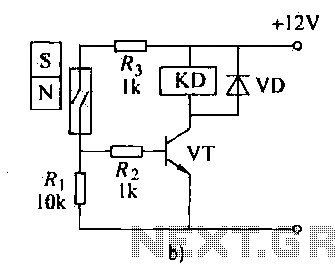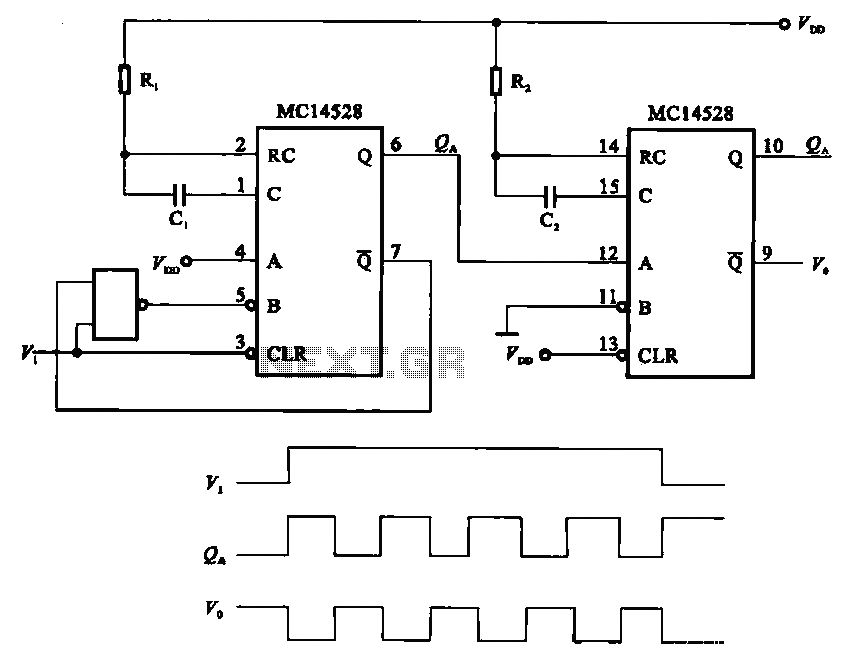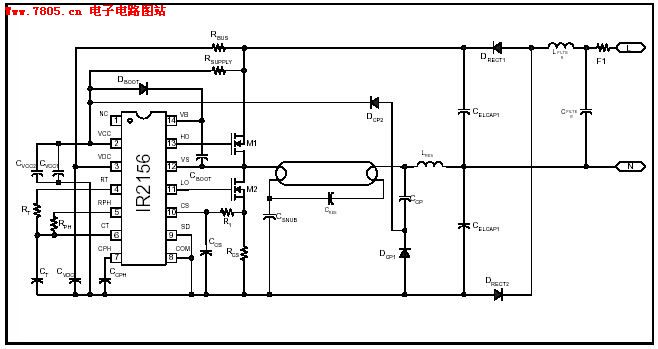
BLY94 50W RF Amplifier Circuit

This FM RF power amplifier circuit is constructed using a BLY94 transistor, which can deliver up to 50W at a frequency of 175MHz with a power gain of 7dB, resulting in approximately 5 times power amplification. However, in this schematic, the BLY94 operates in the 3-meter band (FM 88-108 MHz), achieving a higher power gain of 8dB, or about 6 times amplification. With the use of high-quality trimmers and coils, the BLY94 can provide up to 50W of RF power with an input RF power of 7W.
The FM RF power amplifier circuit utilizing the BLY94 transistor is designed for efficient signal amplification in the FM broadcasting range of 88-108 MHz. The BLY94 is a high-frequency transistor known for its ability to handle significant power levels, making it suitable for applications in FM transmitters.
In this configuration, the circuit achieves a power gain of 8dB, which indicates a substantial increase in output power relative to the input. The design emphasizes the importance of using quality components, particularly trimmers and coils, which are critical for tuning and stability. These components help to optimize the circuit's performance by minimizing losses and ensuring that the amplifier operates within its intended frequency range.
The input stage of the amplifier is designed to accept an RF power level of 7W, which is sufficient to drive the BLY94 into its optimal operating region. The output stage, capable of delivering up to 50W, is ideal for broadcasting applications, where high power is required to ensure a strong signal over a wide area.
Careful attention should be paid to the layout of the circuit to reduce parasitic capacitance and inductance, which can affect performance at high frequencies. Additionally, proper heat dissipation mechanisms must be implemented to prevent thermal damage to the transistor during prolonged operation.
Overall, this FM RF power amplifier circuit represents a robust solution for FM transmission needs, combining high power output with efficient gain characteristics, suitable for a variety of broadcasting applications.This fm rf power amplifier circuit is built with BLY94 transistor which delivers up to 50W at 175MHz and has a power gain of 7dB, arround 5x power amplification. But in this schematic bly94 is working in 3 meter band, FM 88-108 MHz, so it has a higher power gain, 8dB 6x.
So if we use a good quality trimmers and coils with 7W input rf power BLY 94 will deliver up to 50W rf power. 🔗 External reference
The FM RF power amplifier circuit utilizing the BLY94 transistor is designed for efficient signal amplification in the FM broadcasting range of 88-108 MHz. The BLY94 is a high-frequency transistor known for its ability to handle significant power levels, making it suitable for applications in FM transmitters.
In this configuration, the circuit achieves a power gain of 8dB, which indicates a substantial increase in output power relative to the input. The design emphasizes the importance of using quality components, particularly trimmers and coils, which are critical for tuning and stability. These components help to optimize the circuit's performance by minimizing losses and ensuring that the amplifier operates within its intended frequency range.
The input stage of the amplifier is designed to accept an RF power level of 7W, which is sufficient to drive the BLY94 into its optimal operating region. The output stage, capable of delivering up to 50W, is ideal for broadcasting applications, where high power is required to ensure a strong signal over a wide area.
Careful attention should be paid to the layout of the circuit to reduce parasitic capacitance and inductance, which can affect performance at high frequencies. Additionally, proper heat dissipation mechanisms must be implemented to prevent thermal damage to the transistor during prolonged operation.
Overall, this FM RF power amplifier circuit represents a robust solution for FM transmission needs, combining high power output with efficient gain characteristics, suitable for a variety of broadcasting applications.This fm rf power amplifier circuit is built with BLY94 transistor which delivers up to 50W at 175MHz and has a power gain of 7dB, arround 5x power amplification. But in this schematic bly94 is working in 3 meter band, FM 88-108 MHz, so it has a higher power gain, 8dB 6x.
So if we use a good quality trimmers and coils with 7W input rf power BLY 94 will deliver up to 50W rf power. 🔗 External reference





